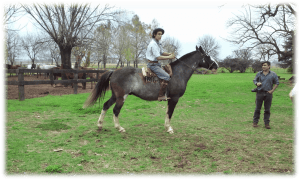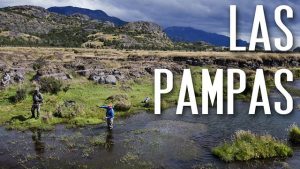
Argentine Spanish “yeísmo.”
Fernando began the tour by explaining Argentine Spanish, an accent concentrated in Argentina and Uruguay, influenced by the immigrant influx. One has to tune your ear to the “yeísmo” and to the lightly pronounced s or z that is more of an exhalation. For example in words like izquierda the z sound almost disappears.
| According to National Geographic Traveler (Argentina), second edition, the yeísmo means the ll and y sounds, both equivalent to English y, sound more like English zh. Also characteristic (of the Argentine Spanish along with other countries) is the voseo, for instance, saying vos decís instead of tú dices. |

Recoleta Cemetery and Downtown Buenos Aires Walking and Eating
To begin, our group went to Recoleta Cemetery to see the grave of Argentina’s famous first lady, Eva Perón who died in 1952. When we visited her mausoleum, someone had recently left a note there thanking her for helping them get their house and saying they would never forget her. Other famous figures also rest there such as military officers, estancia (estate or cattle ranch) owners, aristocrats and former presidents like President Sarmiento, still a cherished figure. Because of him, September 11 will always be the day of the teacher in Argentina despite the day’s infamy here in the U.S.
Buenos Aires has as many cafes as any European city serving pasta, pizza, tea, coffee and desserts. Their steaks, grills, red wines, desserts, ice cream and Italian cooking did not disappoint. We learned quickly about the merienda, an afternoon tea time to keep up strength until dinner around 9pm. In BA, there are attractive green spaces and boulevards reminiscent of Europe. We walked one green area that stretches from the Casa Rosada (executive mansion and office of the president) facing Plaza de Mayo, past a beautiful obelisk to the Plaza del Congreso and Argentina’s attractive green domed Congress.

There is the grave of San Martin, father of the country in the Metropolitan Cathedral, recently the home of now Pope Francis, proud son of Argentina. “We love the pope,” said one of our tour guides who also thought he’s the best pope in the last 2,000 years.
Tango Night With Brazilian tourists
Our tango night lessons brought out the students true talents. Our best dancer applied his martial arts skills. In the tango, you must stalk forward, making your partner go backward until she crosses her feet. Then, she somehow frees her foot and you are both moving again and gracefully in a different direction until you complete 8 steps. Two Brazilian tourists won two large beers for their tango, embellished by the woman’s brilliant gold pants. They were among the many visitors to BA who come to dance. At about 10 pm things picked up at the club with salsa and then dinner was served with more dancing well past midnight.
Free Time to Explore
Over the weekend, we had some free time to visit Tigre (in the Paraná Delta), a suburb of Buenos Aires where you can take a boat to explore the many interconnecting rivers spilling from the Paraná into the Río de la Plata. Reasonably priced crafts and other shopping is another plus.

On Sunday, two of us crossed the Río de la Plata by ferry to Colonia de Sacramento, Uruguay, a UNESCO heritage site memorializing the crossroads of Spanish and Portuguese colonial rivalry. Many ferry passengers had their yerba mate on this early ride. We heard that some locals drink mate all day. There was paella for lunch with Uruguayan red wine. Stray dogs also entertained visitors with their territorial wars and friendly participation in the city tour.
The Pampas Riches and Horse Riding
On Wednesday of the second week, our group took a tour north to visit flat grasslands stretching for miles with angus cattle, horses and an occasional burro (who demonstrated what is a truly blank expression) and sheep, native trees spread low and the eucalyptus that stretch up tall and thin.
Here on las pampas, only 70 miles outside Buenos Aires, winter was more distinct compared to the geographically sheltered capital. The trees, like the famous ombú (which is in fact an overgrown herb), had lost their leaves. The ombú in BA’s Recoleta neighborhood still had leaves.
In the pampas at San Antonio de Areco, we went to an estancia and many of us rode the horses, very muscular working animals trained by gauchos (ranch workers) with gentleness, petted like dogs.

Sixteen year old gaucho and our teacher.
All the visitors who rode the horses paraded in a line, la cabalgata, in the distant muddy fields. The river only 3 km away had risen a week earlier and only just receded leaving lots of mud. We were lucky to come after the inundation on a brilliant sunny day. Three of us took a cart ride. The gaucho who drove wore a beret, a tribute to his Basque roots, wore baggy cotton clothes with a wide leather belt garnished with flat coins and with the traditional knife, facón stuffed in the back waist. Our horse sweated profusely and was very tired from pulling four of us through a muddy lane. Afterwards, we ate delicious grilled Argentine beef (all different cuts) sausage, chicken, salad and potatoes and drank red wine or coca cola. The Argentine Neapolitan ice cream was as good as ice cream gets. A gaucho guitarist played folk songs and then a 16-year old gaucho showed how they train horses by treating them as their best friend. At the end of the day the dogs and their owners showed their skills guiding the horses out of the corral to the open pastures.
Making More Free Choices
On this trip, we all had a chance to choose activities we enjoyed whether shopping, visiting churches, going to exercise classes (like yoga and Jiu-jitsu), going to the museums, book shops, and the ballet at Teatro Colón or seeing the latest Argentine movie.
The Neighborhoods and Boca Junior Soccer

We had a chance to visit most of the famous neighborhoods in Buenos Aires with our teacher whose local insights made him the best guide there could be. Each was so distinct and ranged from trendy and luxurious ¨Palermo to the small but expanding Chinatown. La Boca, a neighborhood on the river, impresses both tourists and locals with its colorful homes, immigrant and tango history. We saw Argentine school children on field trips to La Boca to learn about its rich and varied culture.
And finally we visited the stadium of Argentina’s most popular soccer team, Boca Juniors.






